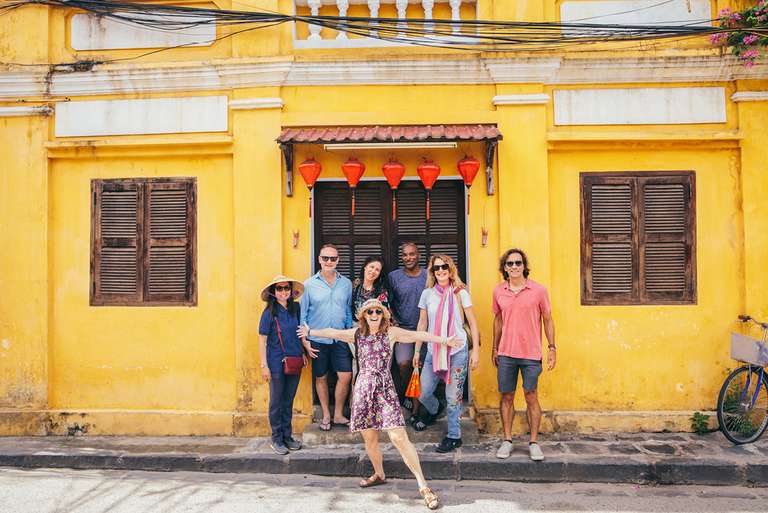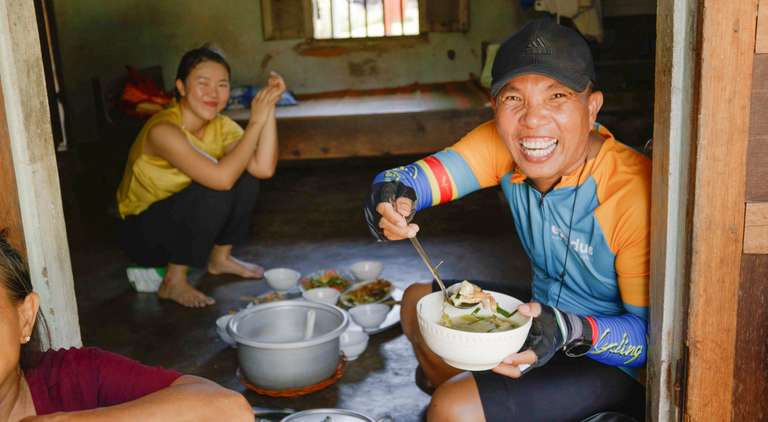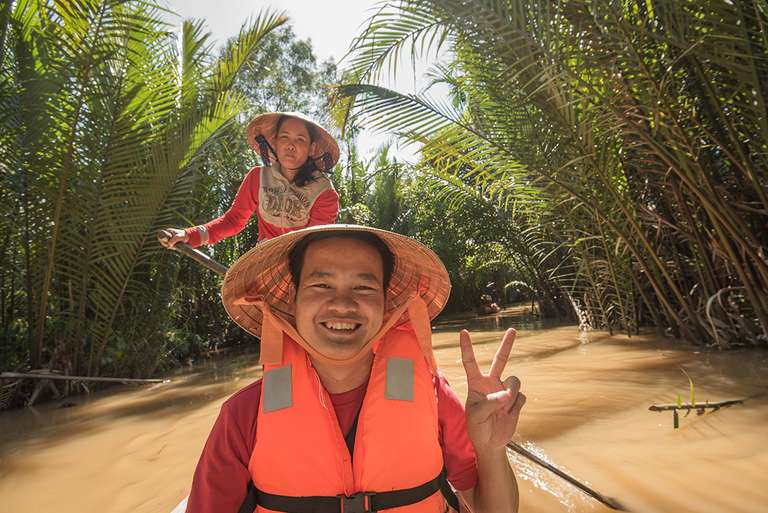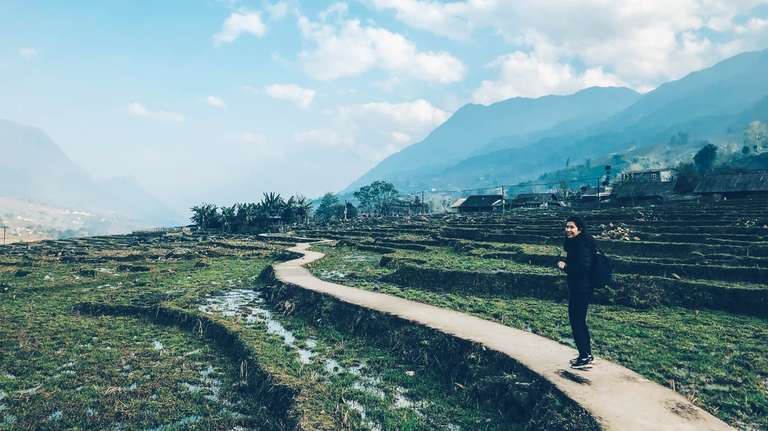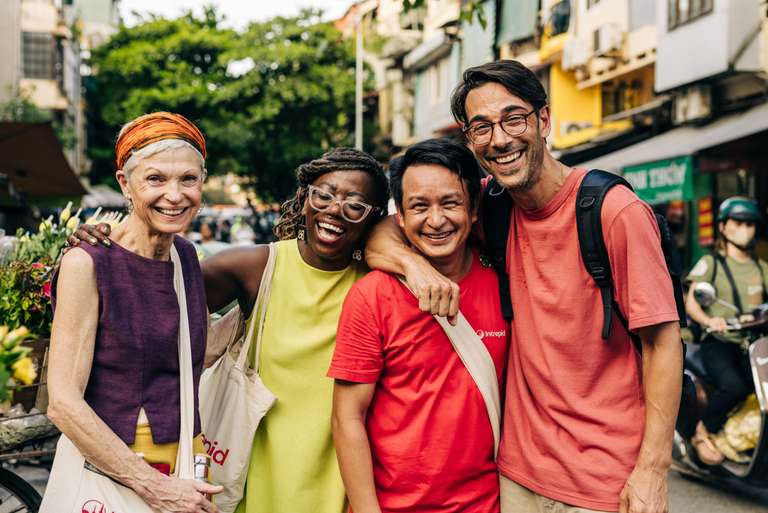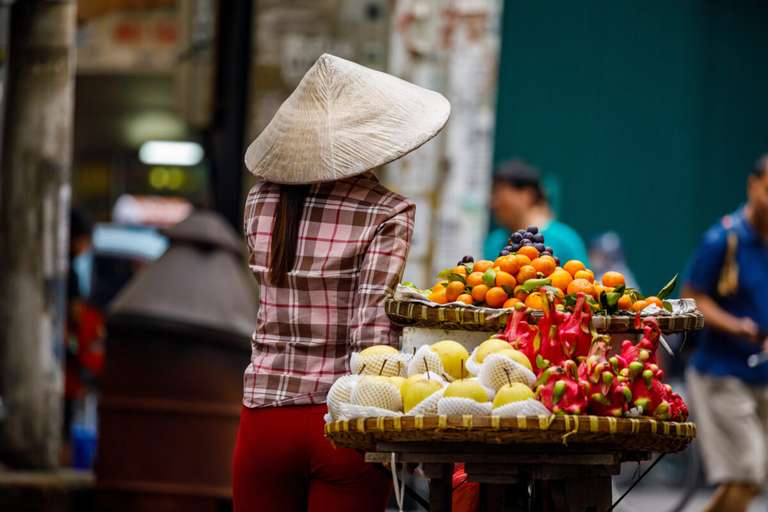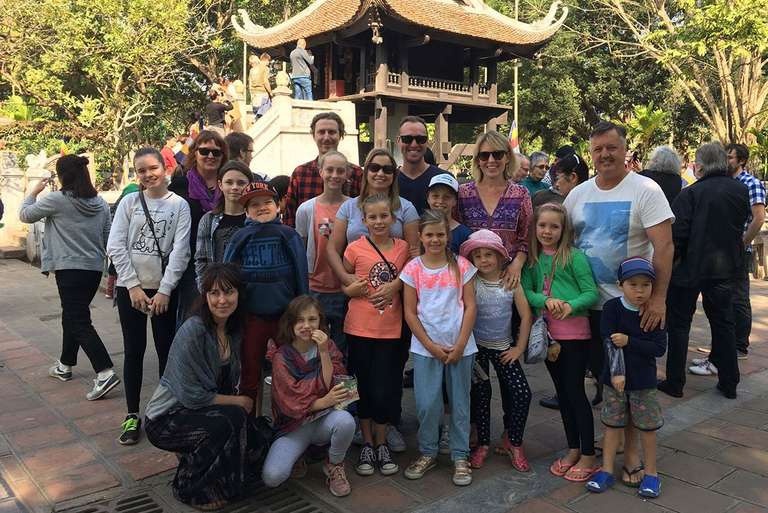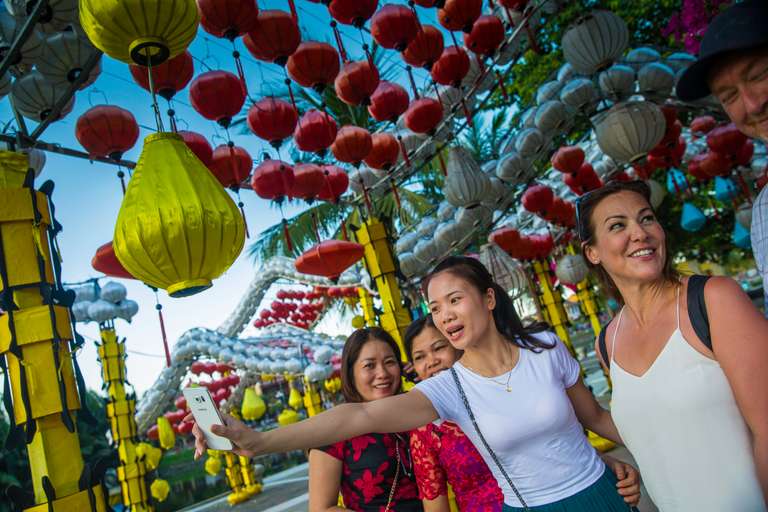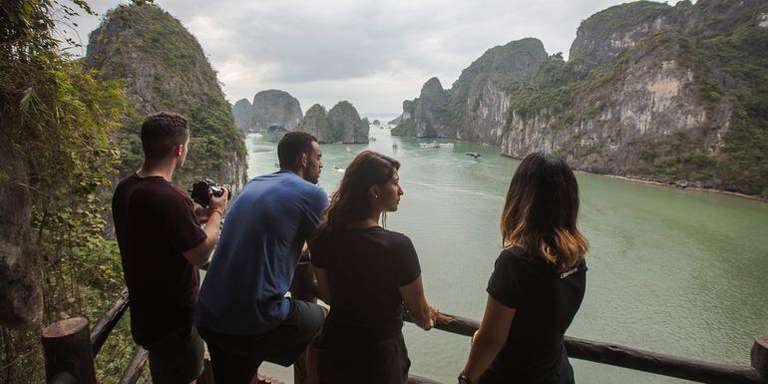Best Time To Visit Vietnam
- Excellent
- Good
- Fair
- Poor
- JanAvg Daily: 21 ° CAvg Nightly: 14 ° C
- FebAvg Daily: 24 ° CAvg Nightly: 17 ° C
- MarAvg Daily: 27 ° CAvg Nightly: 19 ° C
- AprAvg Daily: 31 ° CAvg Nightly: 22 ° C
- MayAvg Daily: 34 ° CAvg Nightly: 25 ° C
- JunAvg Daily: 35 ° CAvg Nightly: 27 ° C
- JulAvg Daily: 34 ° CAvg Nightly: 26 ° C
- AugAvg Daily: 33 ° CAvg Nightly: 26 ° C
- SepAvg Daily: 32 ° CAvg Nightly: 24 ° C
- OctAvg Daily: 30 ° CAvg Nightly: 22 ° C
- NovAvg Daily: 27 ° CAvg Nightly: 19 ° C
- DecAvg Daily: 22 ° CAvg Nightly: 15 ° C
- Excellent
- Good
- Fair
- Poor
- Sarah Hewlett
- From England
- Sarah Hewlett
- From England
- Aila Hamann
- From Singapore
- Alicia Barr
- From
Best time to travel to Vietnam: Quick Facts
| High Season | October to April |
| Low Season | May to September |
| Good Season | Northern Vietnam: spring (February to April) and autumn (September to early December) Central Vietnam: dry season (February to August) South Vietnam: dry season (December to May) |
| All Seasons | Northern Vietnam: Spring (February to April), summer (May to August), autumn (September to early December), and winter (mid-December to January) Central Vietnam: wet (August to November) and dry (February to August) Southern Vietnam: wet (May to October) and dry (December to May) |
Best months to visit Vietnam: Seasonal overview
Best time to visit Northern Vietnam
Spring in Northern Vietnam—February to April

Spring in Northern Vietnam enjoys mild and pleasant weather, with temperatures ranging from around 20°C (62°F) in February to 30°C (86°F) in April. This season is ideal for outdoor activities such as trekking in Sapa, exploring the bustling streets of Hanoi, and taking a cruise in the picturesque Ha Long Bay. The countryside also bursts into vibrant colors as flowers bloom, adding to the region's scenic beauty.
| Avg. Temperature | 25°C (77°F) (in Hanoi, Northern Vietnam) |
| Average Rainfall | 25 mm |
| Is spring a good time to go to Northern Vietnam? | Spring in Northern Vietnam is the best time to visit Vietnam for comfortable weather and outdoor adventure. |
Highlights:
- Join thousands of worshippers as they journey to the Perfume Pagoda at the annual Perfume Pagoda Festival near Hanoi.
- Embark on a cruise through the tranquil waters of Ha Long Bay, a Unesco World Heritage Site. Spring offers clear skies and mild temperatures, perfect for exploring the bay's iconic limestone karsts, hidden caves, and emerald-green waters.
- Witness the cherry blossoms in Moc Chau, which bloom during spring. Marvel at the vast expanses of pink and white blossoms carpeting the landscape, and enjoy picnics amidst the flowers.
Tips:
- Northern Vietnam's spring weather can be unpredictable, so wear layers to adapt to changing temperatures.
- Spring is a popular time to travel to Vietnam, so book your accommodation early to avoid last-minute hassles.
- While spring brings mild weather, occasional rain showers are common, so pack a lightweight waterproof jacket and an umbrella.
In-depth month-wise guides:
Vietnam in February
Vietnam in March
Vietnam in April
Summer in Northern Vietnam—May to August

Summer in Northern Vietnam is hot and humid, with temperatures ranging from around 33°C (91°F) to 35°C (95°F). Despite the heat, summer offers various outdoor activities, such as cruising in Ha Long Bay, exploring the vibrant streets of Hanoi, and trekking in Sapa's surrounding mountains. The countryside is lush and green, providing a picturesque backdrop for adventures—however, occasional monsoon rains and thunderstorms are common during the hottest summer months.
| Avg. Temperature | 34°C (94°F) (in Hanoi, Northern Vietnam) |
| Average Rainfall | 104 mm |
| Is summer a good time to go to Northern Vietnam? | Summer in Northern Vietnam is a vibrant and dynamic season, perfect for enjoying cultural and outdoor activities. |
Highlights:
- Venture into the lush mountains surrounding Sapa for exhilarating trekking adventures. Summer is the best time for hiking, bringing verdant landscapes, cascading waterfalls, and vibrant rice terraces. Soak up breathtaking views and enjoy cultural encounters with local hill tribes.
- Join local fishermen for a traditional fishing experience in the remote villages of Ha Giang. Learn age-old fishing techniques, cast nets into pristine rivers, and enjoy freshly caught fish cooked over an open fire.
Tips:
- Northern Vietnam's summer can be hot and humid, so drink plenty of water to stay hydrated throughout your travels.
- Beat the heat by planning indoor activities such as visiting some of Hanoi’s top museums, like the Hỏa Lò Prison Museum and the Vietnam National Fine Arts Museum, during the hottest parts of the day.
In-depth month-wise guides:
Vietnam in May
Vietnam in June
Vietnam in July
Vietnam in August
Autumn in Northern Vietnam—September to early December

Autumn in Northern Vietnam is cool and dry, making it one of the best time of the year to go to Vietnam. Clear skies and pleasant breezes are perfect for outdoor exploration. Enjoy beautiful landscapes as the countryside transforms with golden rice fields and colorful foliage, and activities such as trekking in the mountainous regions of Sapa, cruising through the picturesque landscapes of Ninh Binh, and attending local festivals celebrating the harvest season.
| Avg. Temperature | 28°C (82°F) (in Hanoi, Northern Vietnam) |
| Average Rainfall | 46mm |
| Is winter a good time to visit Northern Vietnam? | Autumn in Northern Vietnam offers a delightful combination of comfortable weather and breathtaking natural beauty, making it one of the best months to visit Vietnam. |
Highlights:
- Explore the golden-hued rice terraces of Sapa during autumn, when the landscape is most picturesque. Embark on scenic treks through lush valleys, encountering local ethnic minority villages along the way.
- Join locals at the vibrant Mid-Autumn Festival on your Hanoi tour as they gather in the streets carrying colorful lanterns. Tuck into mooncakes and watch mesmerizing lion dances and puppet shows.·
Tips:
- Indulge in seasonal delicacies like roasted chestnuts, pumpkin dishes, and freshly harvested fruits to savor the autumnal flavors of Northern Vietnam.
In-depth month-wise guides:
Vietnam in September
Vietnam in October
Vietnam in November
Winter in Northern Vietnam—From mid-December to January

North Vietnam enjoys cooler and drier climes in winter, with temperatures dropping to 21°C (69°F). Wintry fog rolls in, particularly in mountainous regions like Sapa and Ha Giang, creating an ethereal ambiance and ideal conditions for hiking. Rainfall is less common during winter, and the drier conditions make this season the perfect time for outdoor activities such as trekking, cycling, and exploring natural attractions.
| Avg. Temperature | 21°C (69°F) (in Hanoi, Northern Vietnam) |
| Average Rainfall | 16mm |
| Is autumn a good time to visit Northern Vietnam? | Winter in Northern Vietnam offers a refreshing escape from the heat of other seasons, with plenty of opportunities for memorable experiences and exploration. |
Highlights:
- Wander through the vibrant streets of Hanoi during the annual Flower Festival, held in winter. Admire colorful floral displays, traditional performances, and street parades celebrating the Lunar New Year.
- Embark on an adventurous journey along the Ha Giang Loop, one of Vietnam's best places to visit, in December. Winter is a wonderful time to traverse winding mountain roads, visit remote hill tribe villages, and soak in breathtaking panoramic views of terraced rice fields blanketed in mist.
- Experience the tranquility of Pu Luong Nature Reserve with a homestay in a traditional Thai ethnic minority village. Enjoy authentic cultural immersion, scenic hikes through terraced rice fields, and breathtaking views of limestone cliffs, skipping the high-season crowd at discounted rates.
Tips:
- Be prepared for foggy conditions, especially in mountainous areas like Sapa, and consider bringing appropriate gear for trekking.
- Stay flexible with your travel plans in winter due to occasional disruptions caused by weather conditions, such as fog.
- Explore Northern Vietnam's national parks in winter for lush foliage and fewer crowds, ideal for hiking and wildlife spotting.
In-depth month-wise guides:
Vietnam in December
Vietnam in January
Best time to visit Southern and Central Vietnam
Dry season in Central and Southern Vietnam

The dry season in Central Vietnam typically spans from February to August and November to April in Southern Vietnam. The weather is sunny and warm, and there is very little rainfall. Temperatures are balmy and perfect for adventures such as island hopping, snorkeling, and in the crystal-clear waters of Central Vietnam. Cruising the scenic Mekong Delta and relaxing on the sandy beaches of Phu Quoc and Mui Ne are popular dry-season activities in Southern Vietnam.
| Avg. Temperature | 25°C (77°F) (in Huế, Central Vietnam) 28°C (82°F) (in Ho Chi Minh City, Southern Vietnam) |
| Average Rainfall | 80mm (in Huế) 135mm (in Ho Chi Minh City, Southern Vietnam) |
| Is autumn a good time to visit Northern Vietnam? | The dry season is generally a fantastic time to visit Central and Southern Vietnam. The weather is typically warm, sunny, and relatively dry during this period, making it one of the best times to travel to Vietnam for outdoor activities, sightseeing, and beach vacations. |
Highlights:
- The dry season in Southern Vietnam brings calm waters and sunny weather, ideal for leisurely cruising through the Mekong Delta's intricate network of waterways. With minimal rainfall, travelers can explore floating markets, orchards, and villages without interruptions.
- In the dry season, the Hai Van Pass in Central Vietnam offers clear views of the coastal landscape and lush mountains, making it an ideal time for cycling enthusiasts. With dry roads and pleasant temperatures, cyclists can fully appreciate the stunning scenery and exhilarating ride along this iconic route.
Tips:
- In urban areas like Ho Chi Minh City, dry season air pollution can be higher due to reduced moisture. Consider wearing a mask if you are sensitive to pollutants.
- Central and Southern Vietnam can get hot during the dry season. Carry a portable fan or cooling towel, and plan activities for cooler parts of the day to avoid heat exhaustion.
Wet season in Central and Southern Vietnam

The wet season in Central Vietnam lasts from August to November, and in Southern Vietnam from May to October. The climate is hot and very humid, with plenty of rain. Humidity levels often exceed 80 percent, making it feel hot and sticky. Rainfall is sporadic but can be heavy at times, with short, intense downpours followed by periods of sunshine. In August and October, tropical storms and typhoons can occur, bringing heavy rain, strong winds, and potential flooding.
| Avg. Temperature | 24°C (76°F) (in Huế, Central Vietnam) 30°C (86°F) (in Ho Chi Minh City, Southern Vietnam) |
| Average Rainfall | 90mm (in Huế, Central Vietnam) 212mm (in Ho Chi Minh City, Southern Vietnam) |
| Is autumn a good time to visit Northern Vietnam? | The wet season in Central and Southern Vietnam is extremely hot, humid, and wet, with monsoon rains and occasional typhoons, so it is not the ideal time to visit Vietnam. |
Highlights:
- Embark on a waterfall-hopping adventure in Da Lat during the wet season. Experience the majestic beauty of cascading waterfalls like Elephant Falls and Datanla Falls, which are most impressive during this time, surrounded by lush vegetation and increased water flow.
- Venture into the lush biosphere reserves of Quang Nam Province during the wet season. Explore the rich biodiversity of areas like Cham Islands and My Son Sanctuary, where rainfall revitalizes the landscapes, creating ideal conditions for ecological exploration and wildlife spotting.
Tips:
- Pack waterproof clothing, shoes, and bags to stay dry during sudden downpours and navigate flooded streets.
Have a list of indoor activities and attractions ready for rainy days. Shop until you drop at - Ben Thanh Market and the Vincom Center in Ho Chi Minh City. Discover Huế’s best museums, like the Thua Thien Hue History Museum and the Hue Royal Museum of Antiquities.
Vietnam offers a diverse range of experiences throughout the year, each season presenting its own unique charm. However, spring and autumn are the best seasons to visit Northern Vietnam as they enjoy mild, dry weather, sunny skies, and comfortable temperatures. From trekking through misty mountains to attending vibrant cultural festivals, Vietnam promises the adventure of a lifetime year-round!
If you are still wondering when is the best time to visit Vietnam, check out our detailed travel guides for each month in our "When to visit Vietnam" segment. For trip planning services on your desired month or season, contact our local experts for a customized trip to Vietnam.
Weather in Vietnam: Rainfall and Temperatures
| Month | Jan | Feb | Mar | Apr | May | Jun | July | Aug | Sept | Oct | Nov | Dec |
| Avg Daily (°C) | 21 | 24 | 27 | 31 | 34 | 35 | 34 | 33 | 32 | 30 | 27 | 22 |
| Avg Nightly (°C) | 14 | 17 | 19 | 22 | 25 | 27 | 26 | 26 | 24 | 22 | 19 | 15 |
| Avg Daily (°F) | 70 | 75 | 81 | 88 | 93 | 95 | 93 | 91 | 90 | 86 | 81 | 72 |
| Avg Nightly (°F) | 57 | 63 | 66 | 72 | 77 | 81 | 79 | 79 | 75 | 72 | 66 | 59 |
| Avg Rainfall (mm) | 17 | 7 | 18 | 32 | 74 | 66 | 92 | 135 | 73 | 46 | 20 | 15 |


